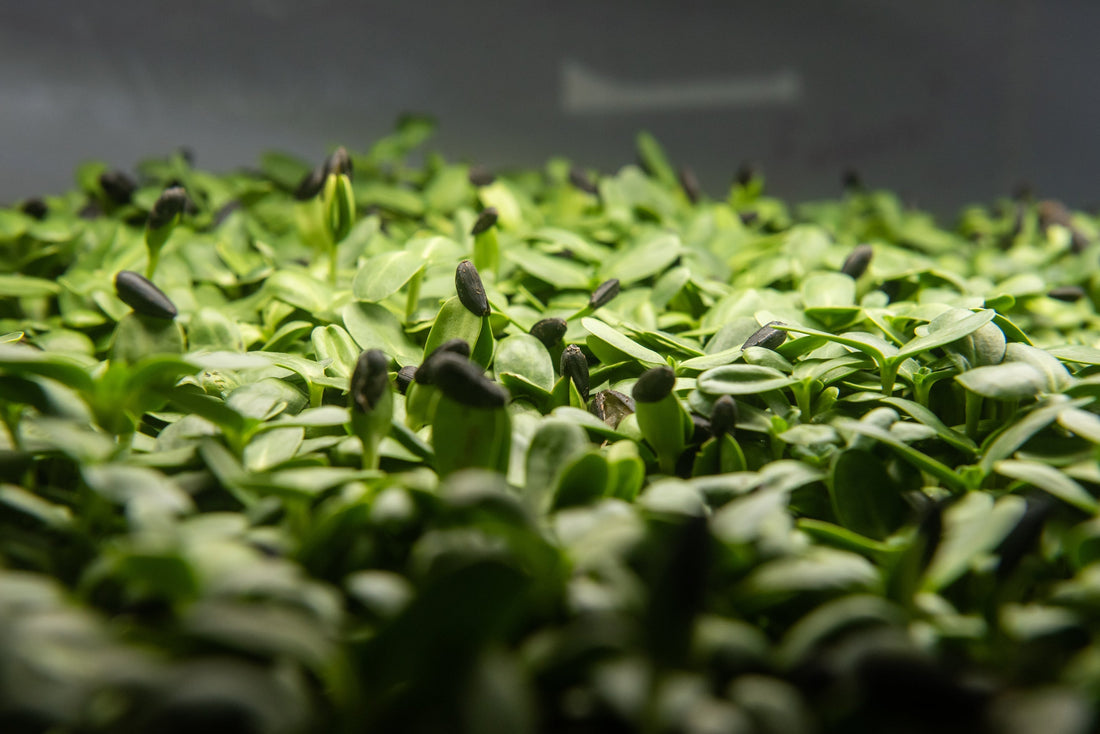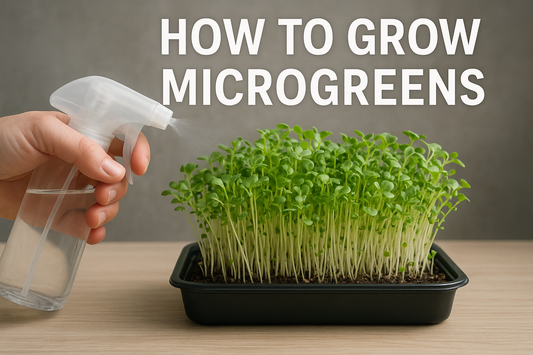
The Benefits of Chlorophyll in Microgreens
Share
Introduction. Have you ever wondered why plant leaves are so vivid green? The answer lies in chlorophyll — a substance that not only gives plants their color but can become your ally in the pursuit of good health. And speaking of potency, microgreens are a true "green pharmacy" right on your windowsill. How does chlorophyll benefit the body, which microgreens are richest in it, and how can you easily incorporate them into your diet? It’s not just a trend — scientific studies confirm that microgreens truly work.
What Is Chlorophyll and What Are Its Benefits?
Chlorophyll is the pigment responsible for photosynthesis, allowing plants to convert sunlight into energy. But its role in human health is no less significant. Structurally similar to hemoglobin (the oxygen-carrying protein in blood), chlorophyll can:
- Improve tissue oxygenation, boosting endurance and reducing fatigue.
- Bind toxins, aiding in natural detoxification.
- Stimulate cell regeneration, speeding up wound healing.
Important: plants contain chlorophyll-a and chlorophyll-b. When consumed via sprouts and microgreens, they deliver maximum effect.
Can chlorophyll be harmful? Only in synthetic tablet form if overdosed. Natural chlorophyll from fresh microgreens sprouts is safe even for children and pregnant women.
Which Microgreens Are Richest in Chlorophyll
Almost all bio microgreens are good sources, but some are especially rich in chlorophyll:
- broccoli sprouts;
- wheatgrass;
- kale;
- spinach;
- peas;
- sunflower;
- clover.
There’s no set daily chlorophyll requirement, but studies suggest 100–300 mg per day is safe and effective—around 30–50 g of fresh microgreens.
How to Add Chlorophyll Microgreens to Your Diet
The easiest way is to include them in everyday meals, for example:
- Morning smoothie: add 1–2 tbsp of wheatgrass to a banana-almond milk blend.
- Green toast: spread avocado on bread and top with spinach microgreens.
- Quick salad: mix arugula with cucumber, lemon juice, and olive oil.
- Green sauce: blend mustard with basil, garlic, and yogurt—perfect for fish or pasta.
You can also freeze wheatgrass juice in ice cubes—nutrients last up to a week. In the morning, just drop a cube into water or a smoothie.
Conclusion
Chlorophyll is more than a trendy ingredient—it’s a real health helper. In microgreens, it’s in its liveliest form, highly bioavailable, and delivers noticeable benefits. If you want to eat consciously, boost immunity, and feel better, start simply by adding chlorophyll-rich microgreens to your meals. Green Chief makes it easy and tasty with microgreens delivery, high-quality seeds, and everything you need to grow them at home.











